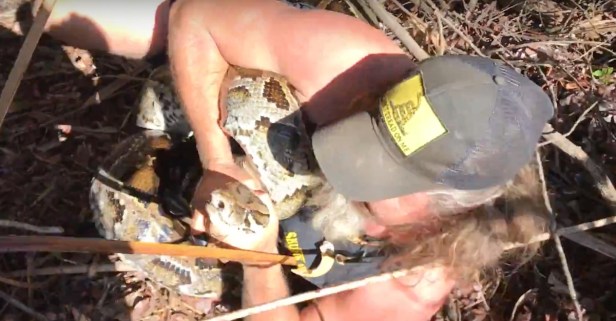Ton.
Videos by Rare
That is the number of snakes in weight that have been captured by bounty hunters being paid by the state of Florida to address the serious Burmese python problem in the Everglades.
RELATED: A video of a man wrestling a 16-foot python in the wild is the most Florida thing we’ve ever seen
The Florida House voted in April to enter into competitive bid contracts with private individuals who want to hunt down pythons, lionfish and other invasive species in the Everglades, and the current incentives for hunters include an $8.10 hourly pay and monthly bonuses based on the size of the captured snakes.

Since then, and there are weeks left for this program, bounty hunters have bagged an incredible ton’s worth of pythons.
You can watch one such capture above. That one was an outlier for a couple of reasons, the first being that the bounty hunter wrestled the snake into a box. The second reason is that it was the largest python ever caught. It was 16 feet long.
The Houston Chronicle identified that man in full as Dustin Crum.
Crum said he saw something shimmer and pounced.
“I was driving by and caught a shimmer of something,” he said. “I thought it was an empty water bottle or something reflecting off the sun. When I stopped, I could see it was a big snake.”

“It’s a battle with heavy weights. The snake is all strong, 130 pounds of muscle,” he continued. “I didn’t know it was going to be that big, it was fairly fat, but I didn’t know it was going to be 16’10”. I was blown away.”
According to Weather.com, bounty hunters are paid $50 for every 4-foot snake they catch and $25 for each additional foot. If a python is caught nesting, that’s an additional $150.
At this point, $29,000-plus dollars have been paid out, so that’s one way to use tax revenue. To put it in perspective, Dustin Crum’s snake fetched him $350, by our math, on top of his hourly wage.
As we’ve noted in the past, pythons have been challenging the ecosystem of the Everglades for more than a decade.
Here’s what the National Park Service has said about pythons in the Everglades in recent years:
In recent years, snakes from around the world have been turning up in and around Everglades National Park. Burmese pythons, one of the largest snake species on earth, are now known to be breeding in the park and spreading throughout south Florida. Originally from southeast Asia, Burmese pythons are now frequently found in south Florida. More than 2,000 pythons have been removed from the park and surrounding areas since 2002, likely representing only a fraction of the total population.
The population of Burmese pythons presently established in the park is the result of accidental and/or intentional releases by pet owners. These introductions can have devastating consequences to our ecosystem. Burmese pythons have been found to feed on a wide variety of mammals and birds in the Everglades — even the occasional alligator! By preying on native wildlife and competing with other native predators, pythons are seriously impacting the natural order of south Florida’s ecological communities. The continued proliferation of Burmese pythons — and the continued introduction of new foreign species — can further threaten many of the endangered plants and animals we’re working diligently to protect.
Clearly, Florida has taken big steps at the state level to deal with the destruction of the ecosystem.
The Associated Press contributed to this report.


